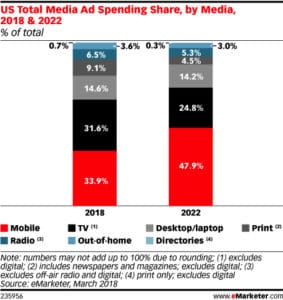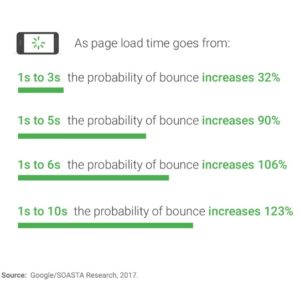The fastest growing digital advertising channels also happen to be the best examples of mobile experiences. Facebook and Google are investing billions of dollars into mobile experiences like Instagram and YouTube. They are at the same time reacting and contributing to the massive consumer shift to mobile. They are the mobile digital experience standard for user experience, speed, and agility.
These platforms, along with non-social mobile app publishers, are being rewarded for their superior experiences with an increasingly massive portion of digital ad spend. Mobile advertising revenue is expected to account for 75% of all digital ad spend in 2018. Year over year, mobile-only Instagram ad spend is growing faster than its parent Facebook.

The Digital UX Revolution is Not Fast Enough
At the same time that this mobile advertising revolution is happening, it seems that the mobile brand experience has been improving at a slower pace. It can’t keep up with the expectations of consumers who are immersed in Instagram Stories, vertical video, and the intuitive UX that dominates the social apps where they spend up to 40 minutes per day.
Consider the following:
- Recent research from ContentSquare found that desktop minutes spent on brand sites still outpaces mobile minutes across 8 broad sectors.
- 53% of mobile site visits abandon a page that takes more than 3 seconds to load and the average mobile page load time according to Google is 15 seconds!
- Desktop sessions still deliver the over 50% online revenue in the US. Mobile accounts for about 30%, with tablets making up the difference.
How many conversions are you losing because your mobile site is hard to navigate or slow to load? What’s worse is that if a user bounces from their entry page before it loads they won’t register as a bounce. Can you even measure how much money you’re leaving on the table?
Programmatic buying is exacerbating this issue by optimizing for mobile placements (because that’s where users spend most of their time). This means that sometimes the best ads lead to the worst brand digital experiences, while marketers offer their best UX on desktop. Consumers are experiencing an uneven funnel.
Bridging The Mobile Divide
Ad channels are attempting to solve this experience inconsistency with things like Google AMP, Facebook Canvas, and native lead generation forms.
While these solutions have a place in your marketing funnel, brands can’t rely on these solutions alone. Your website will always give you the most control and ownership of your results and data.
The marketer’s challenge is to create digital experiences that are as good as the mobile ad platforms you use. As we are deploying our media budget we tend to focus only on the ad experience, optimizing the copy and creative. Don’t lose sight of the whole user experience that extends to your owned properties (where the money is made).
Use your digital ad spend to make the case for investing in your mobile digital experience. Focus on speed, simplicity, and flow. Give your users a buyer’s journey that is fun and easy to breeze through, not a slog to endure just for the privilege of giving you their money.
The task is daunting, but if your owned mobile experiences are not up to par, you may be leaving money on the table. As long as the Googles and Facebooks of the world are setting the mobile standard, you need to be striving for that level of mobile polish.






Josh on
Lovely. Great level of insight.
Gotta fix my UX.
Elizabeth on
Thank you, Dave Janjua, for all of the useful information about users’ expectations of a site. Speed is a fairly straightforward metric, but how should owners of revenue-generating websites measure (and boost) simplicity and flow? Many tnx.
Hi Elizabeth. Depending on your specific business, you could measure simplicity and flow by the number of clicks between any one entry point on your website to the moment of transaction. Really examine each step and determine if parts of the process can be removed or condensed. Thanks for reading!